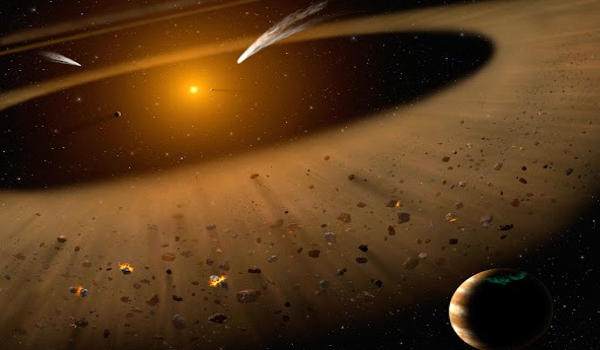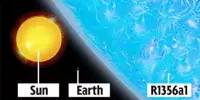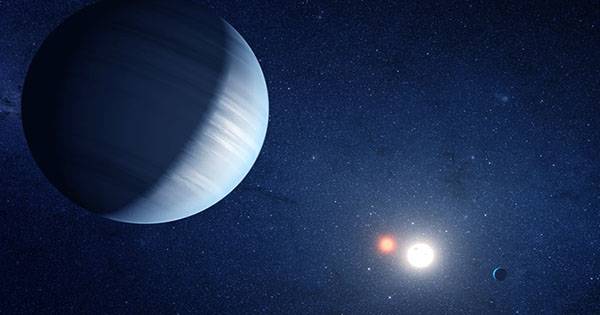Epsilon Eridani is a star in the southern constellation Eridanus, just south of the celestial equator. It is also known as eps Eri, 18 Eri and HD 22049, is located 10.5 light-years away in the constellation Eridanus and is visible in the night skies with the naked eye. It can be seen from most of Earth’s surface. The star is estimated to be less than a billion years old.
It is 10.5 light-years (ly) away and has an apparent magnitude of 3.73. The star’s temperature of 5,116 degrees Kelvin (almost 700 Kelvin cooler than the Sun) and low luminosity (34% solar) tell of a lower mass, approximately 83% that of the Sun. It is the third closest individual star or star system visible to the unaided eye. It is a fourth magnitude (on the bright side, 3.73) class K (K2) ordinary, though relatively young, hydrogen-fusing dwarf.
Epsilon Eridani was the closest star known to host a planet until the unconfirmed discovery of Alpha Centauri Bb. Its age is less than a billion years. Though its rotation speed appears similar to that of the Sun, the star is much younger, some 800 million years old, or one-fifth the age of the Sun. Because of its youth, Epsilon Eridani has a more active magnetic field than the present-day Sun. Its temperature of 5080 degrees Kelvin (88 percent that of the Sun) and low luminosity (34 percent solar) tells of a lower mass, just 83 percent that of the Sun. Its stellar wind is 30 times as strong. Its rotation period is 11.2 days at the equator. The star is smaller and less massive than the Sun and has a lower level of metal elements.

Its planet, Epsilon Eridani b, was announced in 2000. The Epsilon Eridani system is the closest planetary system around a star similar to the young Sun and is a prime location to research how planets form around Sun-like stars. The planet orbits in about 7 years. It is about 3.4 astronomical units (AU) away from its star.
The system includes two belts of rocky asteroids: one at about 3 AU and a second at about 20 AU, whose structure may be maintained by a hypothetical second planet, Epsilon Eridani c. The Epsilon Eridani system also includes two belts of rocky asteroids: at about 3 AU and 20 AU from the star. Epsilon Eridani has an extensive outer debris disk of remnant planetesimals left over from the system’s formation.
Epsilon Eridani may be a member of the Ursa Major Moving Group of stars that share a similar motion through the Milky Way. This suggests they share a common origin in an open star cluster. Its nearest neighbor, the binary star system Luyten 726-8, will have a close encounter with Epsilon Eridani in about 31,500 years when they will be separated by about 0.93 ly.
Epsilon Eridani has been the target of SETI searches. As one of the nearest Sun-like stars with a planet, Epsilon Eridani has been the target of several observations in the search for extraterrestrial intelligence. Epsilon Eridani appears in science fiction stories and has been suggested as a destination for interstellar travel.
Information Source:
















